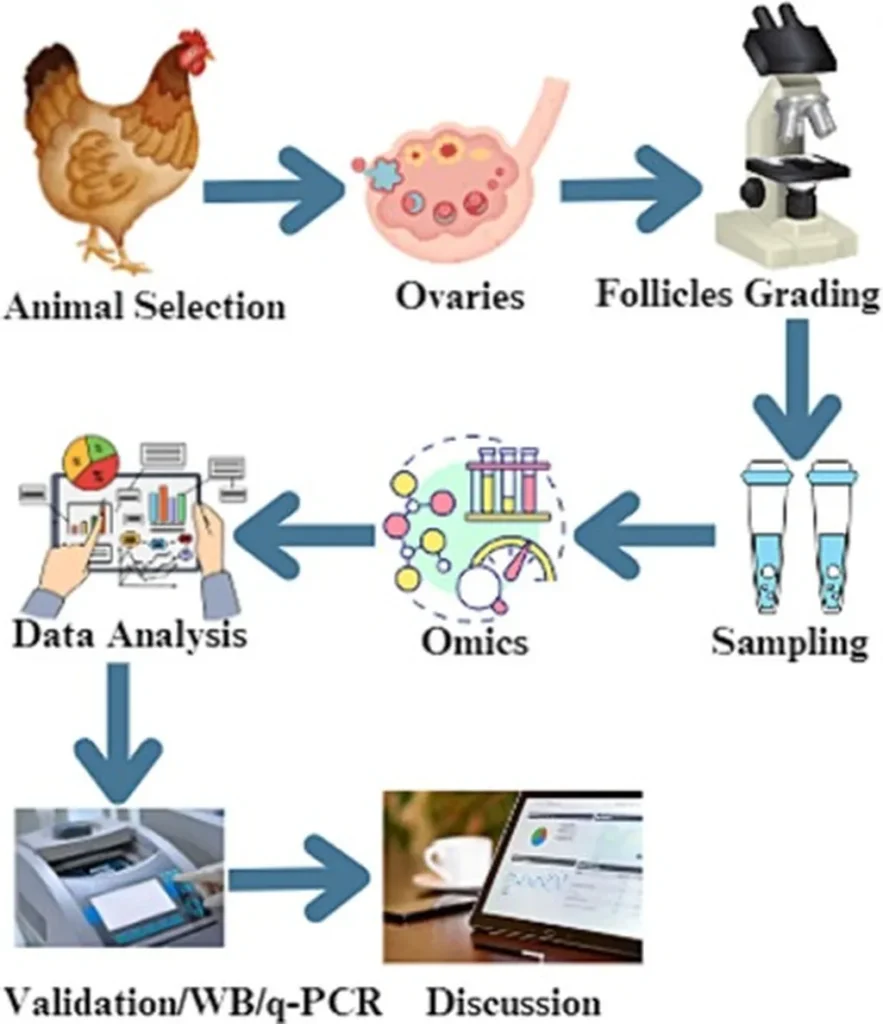In the quest to enhance poultry productivity, a team of researchers led by Peifeng Li from the College of Animal Science at Shanxi Agricultural University in Taiyuan, China, has uncovered a trove of genetic insights that could revolutionize chicken breeding. Their study, published in the journal *Frontiers in Veterinary Science* (translated from its original name, *Frontiers in Veterinary Science*), delves into the complex world of non-coding RNAs and their role in regulating chicken reproduction.
The research team focused on the hypothalamic–pituitary-ovarian (HPO) axis, a critical system that governs reproductive processes in chickens. By performing whole transcriptome sequencing on hypothalamus, pituitary, and ovarian tissues of Bian chickens, they identified a plethora of differentially expressed long non-coding RNAs (lncRNAs), microRNAs (miRNAs), and messenger RNAs (mRNAs) between low- and high-laying groups.
“The HPO axis is like the conductor of an orchestra, coordinating various biological processes to ensure optimal reproductive performance,” Li explained. “Our study aimed to decipher the molecular mechanisms underlying egg-laying performance by examining the regulatory roles of non-coding RNAs across this axis.”
The findings were striking. The hypothalamus exhibited 57 differentially expressed (DE) lncRNAs, 86 DE miRNAs, and 36 DE mRNAs. The pituitary, however, showed the highest numbers with 206 DE lncRNAs, 234 DE miRNAs, and 528 DE mRNAs. The ovary contained 111 DE lncRNAs, 230 DE miRNAs, and 62 DE mRNAs.
Functional enrichment analysis revealed that trans-target genes of hypothalamic and pituitary DE lncRNAs were enriched in cell proliferation processes, such as cell cycle and mitotic cell cycle. Hypothalamic miRNA targets clustered in metabolic regulation, while pituitary miRNAs governed transport processes. DE mRNAs showed enrichment in serotonin biosynthesis, pituitary gland development, and DNA integration.
“These findings provide a comprehensive map of the molecular interactions that underpin reproductive efficiency in chickens,” Li said. “By understanding these regulatory networks, we can identify key targets for improving egg-laying performance through marker-assisted breeding.”
The study also constructed lncRNA-mRNA and miRNA-mRNA pairwise interaction networks, as well as competing endogenous RNA (ceRNA) regulatory networks. These networks highlighted key regulatory networks targeting critical DE mRNAs, including GATA4, SMAD3, FOXL2, INHBA, POU1F1, LHX3, SPP1, SNAP25, COLQ, and AMPH.
The implications of this research are profound for the poultry industry. By identifying specific genetic markers associated with high egg-laying performance, breeders can develop more targeted and efficient breeding programs. This could lead to significant improvements in poultry productivity, benefiting both farmers and consumers.
Moreover, the study’s findings could have broader applications in animal breeding and reproductive biology. The insights gained from this research could be applied to other livestock species, potentially revolutionizing the agricultural sector as a whole.
As the world grapples with the challenges of feeding a growing population, innovative research like this offers a glimmer of hope. By harnessing the power of genomics and molecular biology, we can pave the way for a more sustainable and productive future in agriculture.
“This research is a testament to the power of interdisciplinary collaboration and the potential of cutting-edge technologies to drive agricultural innovation,” Li concluded. “We are excited about the prospects of translating these findings into practical applications that can benefit the poultry industry and beyond.”
Published in *Frontiers in Veterinary Science*, this study not only advances our understanding of chicken reproduction but also opens new avenues for improving poultry productivity and sustainability. As we continue to unravel the complexities of genetic regulation, the future of agriculture looks brighter than ever.

